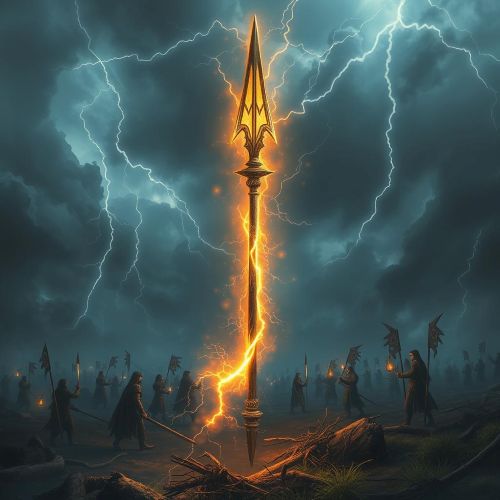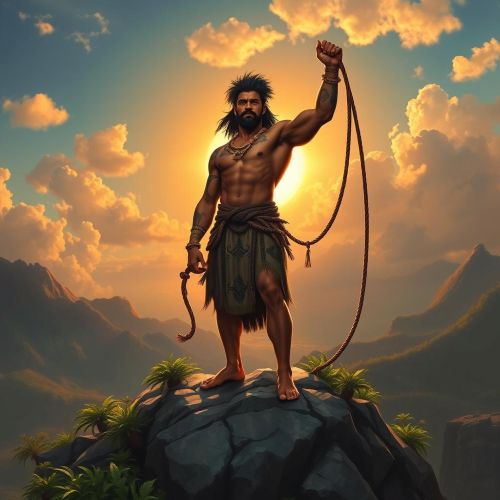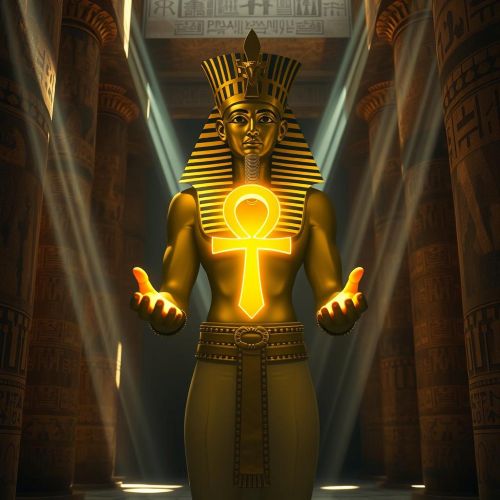Exploring the Nine Realms of Norse Mythology: A Cosmic Odyssey
Norse mythology, a rich tapestry of stories, gods, and creatures, has captured the imaginations of countless individuals throughout history. At its core lies a unique cosmology, consisting of a complex network of interconnected worlds known as the Nine Realms. In this blog, we embark on a cosmic odyssey to explore the realms of Norse mythology, shedding light on the fascinating intricacies of this ancient belief system. So, fasten your seatbelts, as we journey through the realms of Norse mythology!
Asgard – The Realm of the Aesir Gods
Our journey begins in Asgard, the realm of the Aesir gods, often considered the highest realm in Norse mythology. Asgard is a realm of celestial beauty, characterized by grand palaces and shimmering halls. Here, Odin, the Allfather, reigns supreme, accompanied by his mighty sons Thor and Baldur, among others. As the realm of gods, Asgard plays a central role in Norse mythology, serving as the home of these powerful deities and the setting for many legendary tales.
Midgard – The Realm of Humans
Midgard, often referred to as the “Middle Earth,” is the realm of humans. This is our world, the one we inhabit today. It’s the stage upon which most of the Norse sagas and myths take place. Midgard connects all the realms and serves as a bridge between the divine and the mortal. In Norse cosmology, humans are seen as part of the intricate fabric of existence, deeply intertwined with the fate and destiny of the cosmos.
Vanaheim – The Realm of the Vanir Gods
Vanaheim is the realm of the Vanir gods, a group of deities distinct from the Aesir. These gods are associated with fertility, nature, and prosperity. The Vanir and Aesir once waged a great war, but eventually, they made peace by exchanging hostages, signifying the interconnectedness of the realms. Vanaheim’s lush landscapes and natural beauty reflect the essence of these gods.
Jotunheim – The Realm of the Giants
Jotunheim, often depicted as a harsh and unforgiving realm, is the land of the giants or Jotnar. These colossal beings are not necessarily evil, but they are often in opposition to the gods. Jotunheim represents chaos and unpredictability in Norse mythology. It is a place where the boundaries between nature and the supernatural blur, where frost giants and fire giants reside.
Alfheim – The Realm of the Light Elves
Alfheim is a realm of ethereal beauty, inhabited by the Light Elves or Ljósálfar. These beings are associated with light, beauty, and spirituality. Alfheim is often described as a realm of perpetual light and shimmering forests. While it plays a relatively minor role in Norse mythology, its existence adds depth to the cosmic tapestry of the Nine Realms.
Svartalfheim – The Realm of the Dwarves
Svartalfheim, also known as Nidavellir, is the realm of the Dwarves or Svartálfar. These skilled craftsmen are responsible for creating many of the powerful artifacts and treasures featured in Norse mythology, including Thor’s hammer, Mjolnir, and Odin’s magical ring, Draupnir. Svartalfheim is a subterranean world filled with intricate caverns and forges, where the Dwarves work tirelessly.
Niflheim – The Realm of Ice
Niflheim is a realm of extreme cold and ice, the polar opposite of Muspelheim, the realm of fire. It is home to primordial forces, including the great serpent Jormungandr and the monstrous wolf Fenrir. Niflheim is said to be the birthplace of creation, where the icy mist and fire from Muspelheim combined to form the first being, Ymir. It is a place of primal chaos and an essential part of the Norse cosmos.
Muspelheim – The Realm of Fire
Muspelheim, the realm of fire, is a place of intense heat and flame. It is inhabited by fire giants and ruled by the fire giant Surtr. Muspelheim represents the destructive and chaotic forces in Norse mythology. Surtr is destined to play a significant role in the events leading to Ragnarök, the cataclysmic end of the world.
Helheim – The Realm of the Dead
Our cosmic journey concludes in Helheim, the realm of the dead. It is not a realm of punishment but rather a place where souls of the deceased go after death. Hel, the ruler of this realm, is a complex figure, neither wholly benevolent nor malevolent. Helheim is a somber and melancholic place, a reflection of the Norse worldview, where death was accepted as an inevitable part of life.
The Nine Realms of Norse mythology form a complex and interconnected cosmology that provides a glimpse into the worldview of the ancient Norse people. These realms, each with its unique characteristics and inhabitants, contribute to the rich tapestry of Norse myths and sagas, showcasing the interconnectedness of all things in the cosmos. As we conclude our cosmic odyssey through these realms, we gain a deeper appreciation for the intricacies of Norse mythology and its enduring influence on our culture and storytelling.






